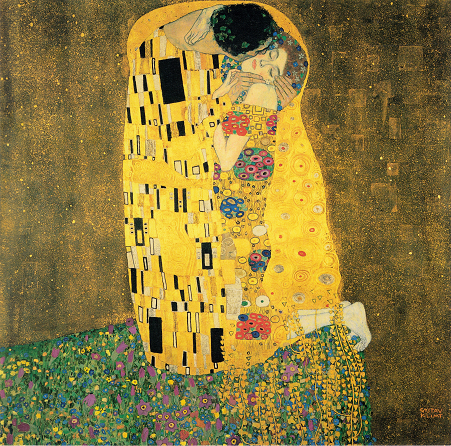Wednesday 17 January 2018: Klimt and the Viennese Secession - "A Kiss for all the world" - Douglas Skeggs

The fears and anxieties of Vienna in the final years before the Great War found expression in the works of Freud and Mahler and in the haunting paintings of Klimt, Kokoschka and Schiele.
The Vienna Secession was an art movement formed in 1897 by a group of Austrian artists who had resigned from the Association of Austrian Artists, housed in the Vienna Künstlerhaus. This movement included painters, sculptors, and architects with founders Gustav Klimt, Josef Hoffmann, Koloman Moser, Carl Moll and Otto Wagner
Klimt, the 150th anniversary of whose birth fell in 2012, was the leader of this Secession movement.
The lecture traces the course of this brief but dazzlingly inventive period of art.
Klimt’s most famous painting "Der Kuss" ( "The Kiss") is on display in the Gallery Belvedere, Vienna.
The Baroque Belvedere Palace houses one of Europe's most important museums, the Gallery Belvedere Vienna. In the Upper Belvedere the world's largest collection of paintings by Gustav Klimt is on display, alongside works by Egon Schiele and Oskar Kokoschka.
The Belvedere also displays works by French impressionists such as Renoir and Monet, paintings of Van Gogh, as well as a large Biedermeier collection.
Read more about Gustav Klimt here
about our lecturer:
Douglas Skeggs read Fine Art at Magdalene College, Cambridge, and is an art historian with an international reputation, specialising in the Impressionists. He has written an appreciation of Monet as well as five novels which have been translated into several foreign languages.
In addition to lecturing widely in the UK he has lectured in Belgium, France, Germany and Spain, and has taken numerous tours around Europe.
He has written and presented various TV documentaries, notably the Omnibus programme on 'Whistler' and the exhibition video on 'William Morris'
Three one-man exhibitions of his paintings have been held in England and Switzerland.